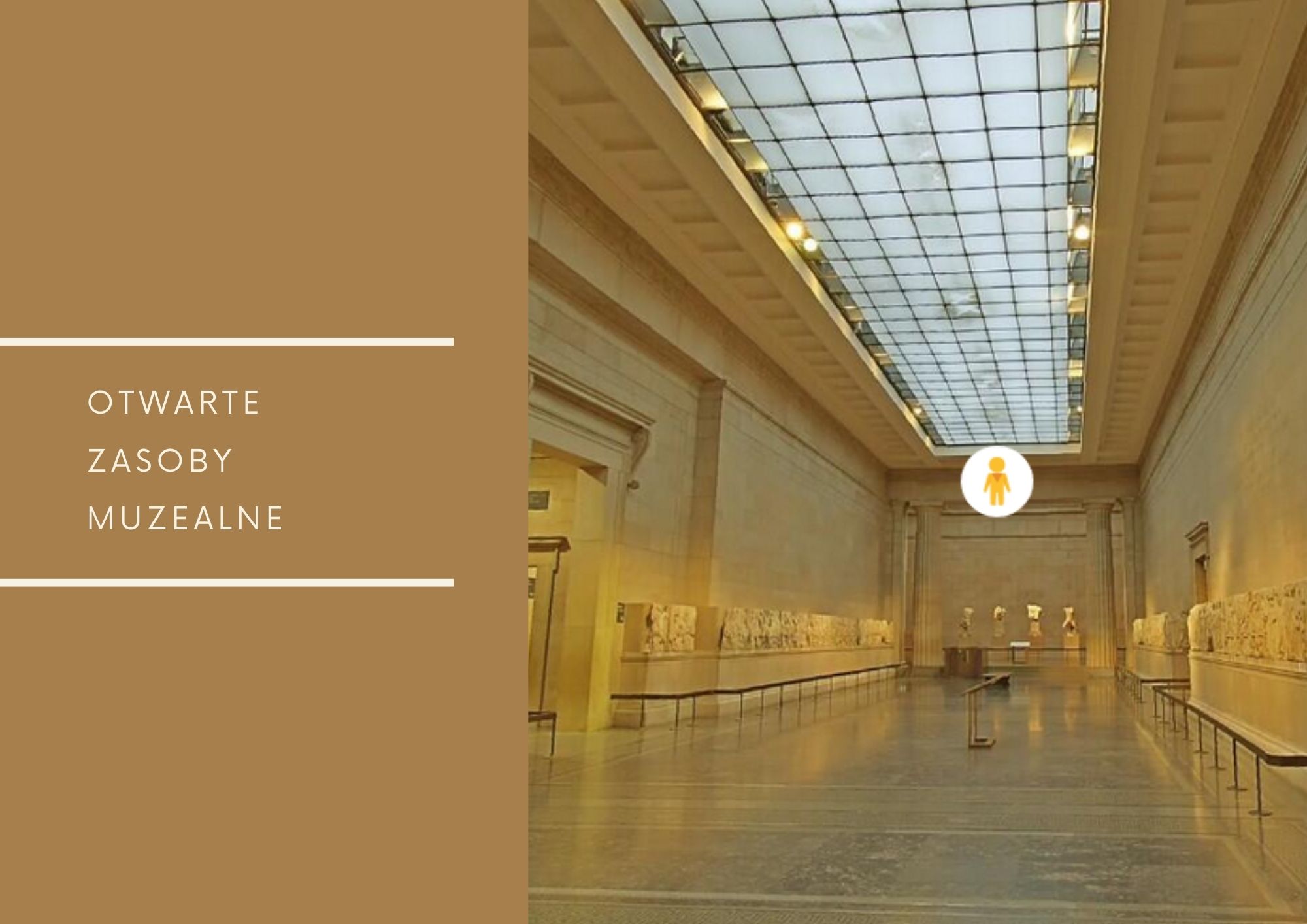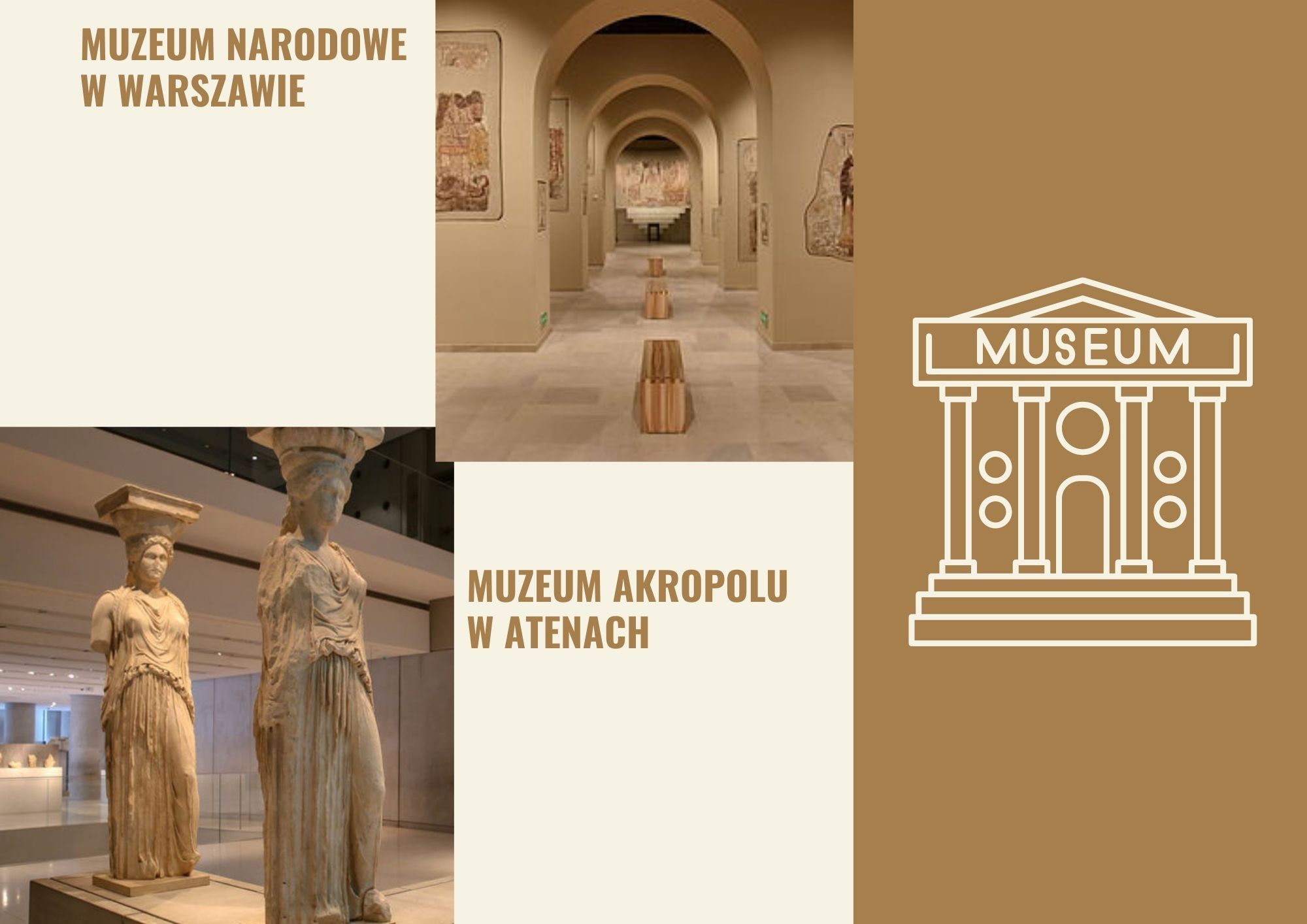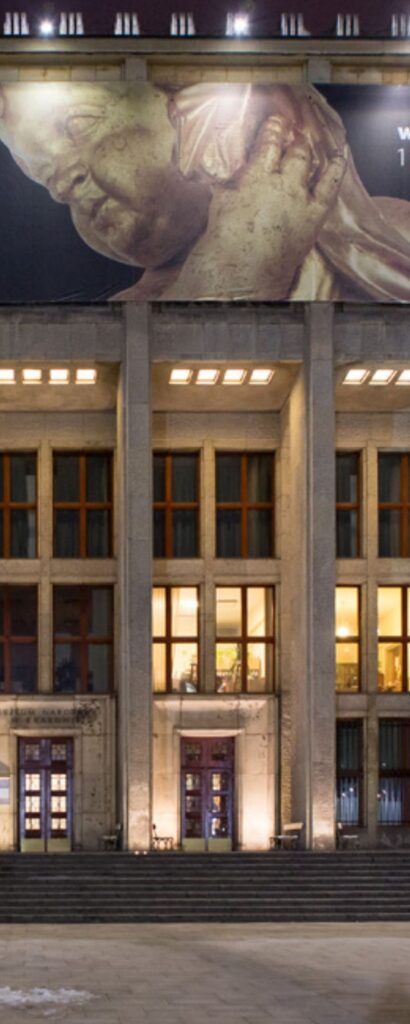Otwarte zasoby muzealne to wszelkie zasoby edukacyjne, do których istnieje w pełni otwarty dostęp. Dzięki objęciu ich wolnymi licencjami lub przeniesieniu do domeny publicznej i udostępnienie za pomocą dowolnych technologii komunikacyjnych oraz informacyjnych.

Wzrost ich popularności
Otwarte zasoby muzealne stały się popularne poprzez pandemię COVID-19. Aby zapobiec rozprzestrzenianiu się koronawirusa konieczne było całkowite ograniczenie imprez masowych i licznych zbiorowisk.

Miłośnicy otwartych zasobów edukacyjnych często wybierają wirtualne zwiedzanie muzeów. Jest to bezpłatna forma zwiedzania w której muzea oferują zdobywanie i poszerzanie wiedzy bez konieczności wychodzenia z domu. W trakcie zwiedzania można obejrzeć wszystkie zabytki i wystawy znajdujące się na miejscu.
W Polsce , jak i w Grecji taka forma zwiedzania zdobywa coraz większą popularność. Polskie muzea oferujące taką możliwość to między innymi Pałac Kultury i Nauki w Warszawie, Muzeum Literatury w Warszawie, Pałac Prezydencki, Muzeum Narodowe w Warszawie, Muzeum neonów oraz Soho i Factory. Natomiast w Grecji najpopularniejsze muzea o takiej formie to Muzeum Akropolu i narodowe muzeum archeolgiczne w atenach
Otwarte zasoby w Polsce i w Grecji


Zarówno otwarte zasoby muzealne, jak i zamknięte różnią się od siebie i mają wiele plusów, ale także minusów. W przypadku muzeów o otwartych zasobach nie jest konieczne wychodzenie z domu. Są one dobra opcją w razie braku funduszy na podróż oraz niewystarczająca ilością czasu potrzebną na dotarcie do najwspanialszych muzeów na świecie. Kolejną różnicą między tymi rodzajami muzeów jest chociażby to, że w niektórych zamkniętych muzeach istnieje możliwość dotknięcia eksponatów, natomiast w wirtualnych nie mamy takiej możliwości
Muzea w telefonie
Dostępne są aplikacje mobilne na telefon dzięki którym możesz zmienić swój telefon w małą, podręczną galerię sztuki lub muzeum. Ułatwią one kontakt ze sztuką na co dzień, dla rozrywki, edukacji oraz czystej przyjemności. Najpopularniejsze z nich to:
Google Art&Culture– zapewne największe, obok Wikipedii miejsce z ze sztuką (od obrazów i rzeźb po fotografie i street-art) w sieci. Można do niego dotrzeć przez stronę oraz świetną aplikację mobilną na oba systemy operacyjne, Android i iOS. Umożliwia przeglądanie obrazów, wirtualnych wystaw, a nawet, dzięki opcji StreetView, pozwala spacerować po wnętrzach wielu muzeów z całego świata.


Smartify– reklamująca się hasłem „świat sztuki w twojej kieszeni” aplikacja rozpoznaje znane obrazy za pomocą aparatu fotograficznego i prezentuje ich opisy oraz informacje o tym, w jakim muzeum znajduje się oryginał.
DailyArt– ta aplikacja działa trochę inaczej od pozostałych, odkrywa dla Ciebie jeden obraz dziennie zamiast pokazywać całe zbiory muzeów. Poza obrazem ważne są też opisy, ciekawe i przyjazne, często zawierające historię obrazu lub autora.

Open museum resources
1. Open museum resources – all educational resources that are fully open. Through free licenses or transfer to the public domain and provision with all communication and information technologies.
2. Open museum resources became popular with the COVID-19 pandemic. To prevent the spread of coronavirus, it was necessary to completely restrict mass events and numerous communities.
3. Lovers of open educational resources often opt for virtual museum visits. It is a free form of sightseeing, where museums can acquire and expand their knowledge without having to leave the building. During the tour you can visit all the sights and exhibitions of the property.
This form of sightseeing is becoming increasingly popular in Poland and Greece. Polish museums include the Palace of Culture and Science in Warsaw, the Museum of Literature in Warsaw, the Presidential Palace, the National Museum in Warsaw, the Neon Museum, and Soho and Factory. In Greece, the Acropolis Museum in Athens is the most popular museum of its kind.
4. Both open and closed museum collections differ from each other and have many advantages and disadvantages. For museums with open resources, it is not necessary to leave the building. They are a great option if you don’t have enough money for the trip and don’t have enough time to visit the best museums in the world. Another difference between these types of museums is that some closed museums have the ability to touch the exhibits, whereas in virtual museums we don’t have the ability to touch them.
5. There are mobile apps for your phone that allow you to turn your phone into a small, practical art gallery or museum. They facilitate contact with art in everyday life, for entertainment, education and pure pleasure. The most popular are:
6. Google Art&Culture – probably the largest art place next to Wikipedia (from paintings and sculptures to photographs and street art) on the web. It can be reached via a website and a great mobile app for both operating systems, Android and iOS. It allows you to browse paintings, virtual exhibitions and even explore the interiors of many museums around the world using the StreetView option.
7. Smartify – The app, which advertises with the slogan “Art world in your bag”, recognises familiar images with the camera and presents their descriptions and information about where the original is located.
8. DailyArt – This app works a little different from the others, it discovers one picture a day for you instead of showing entire collections of museums. In addition to the picture, interesting and friendly descriptions are also important, which often contain the story of the picture or the author.